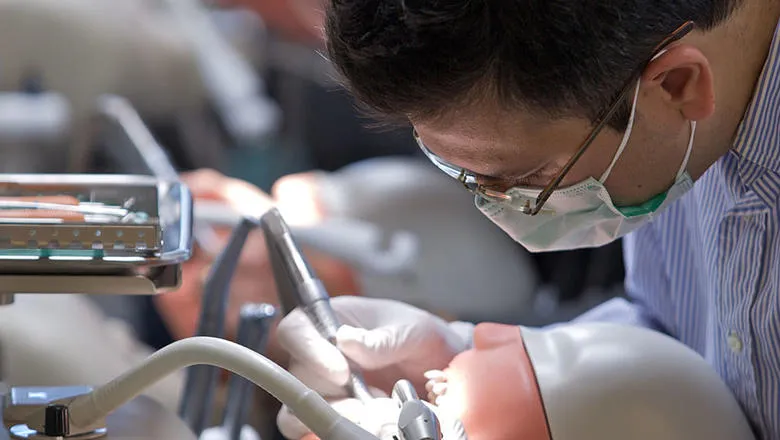21 July 2020
Beyond COVID, lockdown and social distancing:
Making positive impacts on student experience through investment in simulation facilities.

Background
Simulation is a key element of undergraduate and postgraduate clinical dental education. In the current era, it is even more critical that the Faculty of Dentistry, Oral & Craniofacial Sciences at King’s College London can offer world-class simulation facilities that are robust, drive innovation and are future proofed to train Dental Care Professionals. Once they graduate, students will be working, teaching and caring for patients in some of the most complex healthcare environments.
Investment
In a recent statement the Faculty announced support from King’s to invest in the redesign and refurbishment of Simulation areas on Floor 20 of Guy’s Hospital Tower Wing, as well as installation of new haptics facility on Floor 18. We believe this investment, alongside concurrent changes to pedagogy, will deliver many key benefits and improvements which will ensure our continued status of a world-leading dental faculty.
New facilities
The completion of the new facilities will see the installation of 70 new phantom heads and 12 modern haptics technology units. These will be supported by state-of-the-art online learning technology platforms, including true-colour fast and accurate intra-oral scanners.
The intra-oral scanners can be used to scan the oral anatomy of patients seen by our undergraduate and postgraduate students whilst they are treated in our partner hospitals. They can also be used on plastic or donated human teeth mounted in a phantom head simulator.
This curriculum innovation allows students to move scans into the high-fidelity system, a set up not yet seen at any other dental school worldwide. Students will be able to practice the clinical procedure in the haptically enabled learning environment before carrying it out on a real-live patient.
Floor 20 of Guy’s Tower houses the faculty clinical simulation. The main simulation laboratory contain 62 phantom head simulation units with a central presenter console.
This investment offers potential for an additional 24 simulation units to relieve the existing pressure on space. With the changes to the pedological approach, this enables far greater and improved access and facilitates whole team learning. Furthermore, these facilities may also potentially increase our capacity for CPD offering.

Haptics
This refurbishment will also enable high-quality, virtual reality (Haptics) and computer-aided design training to be delivered in an integrated environment. This will build student confidence from Year 1 to those in the later undergraduate years. Postgraduate students will also benefit through development of highly technical and delicate clinical procedures such as root canal treatment and crown and bridge work. This clinical simulation space presents a safe learning environment, where students can take the first steps from novice learners to highly trained clinical operators who can safely treat patients with a range of dental procedures.
The investment will see the refurbishment of the haptic simulation room in the Lecture Room on Floor 18, with the addition of 12 ‘plug and play’ high fidelity devices added to the current set up of 8 units.
Leading the sector
Once complete, King’s will be leading the sector with this set up. Currently very few schools have more than 5 haptic dental chair simulators, nor the in-house expertise for enabling the haptic technology. The ability to transfer scans between the high and low fidelity simulation phantom heads and integrating the technology into the NHS Digital Architecture within the treatment clinics provides students with the very best.
The faculty will be able to introduce our students to these state-of-the-art technologies not only in the simulation and virtual environment, but also in the clinics. Over the past 10 years, GSTT has invested in the digital infrastructure to allow CAD/CAM on clinics. In order to now develop the undergraduates and postgraduates this will now be integrated into the simulation facilities, enabling students to scan their patients on clinic or the phantom head models, and then move the scans into the simulators. This allows student development through simulation in an integrated fashion through haptic and phantom head units, with the ability to then transfer these skills to a patient environment. Having this capability future proofs our simulation facilities and allows us to make the most out of every patient experience by using real-life patient scans in a virtual environment.
This is an essential feature of the new innovative curriculum, designed to allow students to interface between the live treatment clinics and the simulation and virtual space, thus promoting a more ‘learner centered’ approach to the complex technical and clinical skills required to carry out clinical dentistry.
